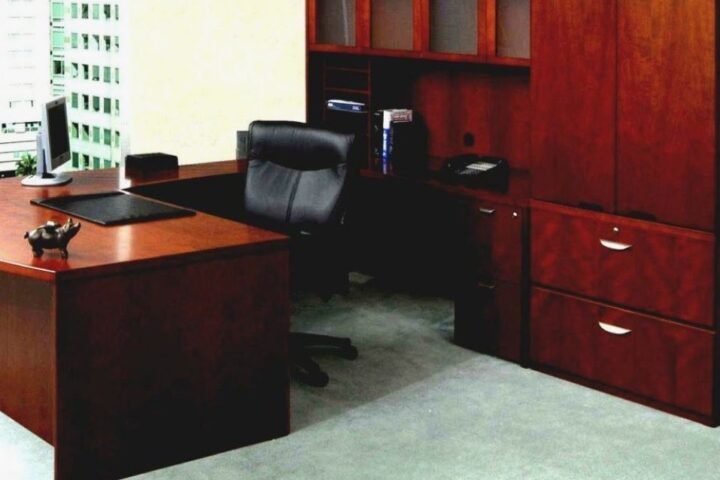When it comes to designing an efficient and comfortable workspace, the choice of furniture plays a crucial role. Among all the pieces, the office table stands out as the centerpiece of productivity and style. Whether you are setting up a home office or furnishing a corporate environment, selecting the right office table can significantly impact your workflow and overall comfort. The market offers various options, but free standing tables have become increasingly popular due to their flexibility, aesthetic appeal, and ergonomic benefits. These tables allow for more freedom in office layout design and can easily adapt to changing needs, making them an ideal choice for modern workspaces.
The Benefits of Free Standing Tables in the Office
Free standing tables provide several advantages that fixed or built-in tables may lack. Their mobility allows employees to reconfigure their workspace effortlessly without requiring professional assistance or additional tools. This flexibility supports a collaborative environment where teams can gather around tables for brainstorming or meetings and then separate for individual work. Additionally, free standing tables come in various shapes, sizes, and materials, catering to diverse design preferences and functional requirements. Their versatility means they can be used not only as desks but also as conference tables, reception counters, or even casual break tables, creating a multifunctional workspace.
Ergonomically, free standing tables often come with adjustable features or complement height-adjustable chairs to promote better posture and reduce strain during long working hours. This adaptability can enhance employee well-being and productivity. Moreover, free standing tables simplify office renovations and relocations, as they are easier to move compared to fixed installations. They also enable better use of natural light and space, as desks can be positioned to maximize daylight or create cozy work nooks.
Materials and Design Trends for Office Tables
Choosing the material and design of an office table is critical to balancing durability, aesthetics, and functionality. Common materials for office tables include wood, metal, glass, and engineered composites. Wooden tables add warmth and elegance to a workspace, often associated with traditional and executive offices. Metal frames combined with wooden or glass tops provide a sleek, modern look, ideal for creative agencies and tech startups.
Glass top tables bring a sense of openness and lightness to the office, making smaller rooms appear larger and more inviting. However, they require regular maintenance to stay clean and scratch-free. Engineered materials like laminate and MDF offer budget-friendly alternatives that are durable and easy to clean, making them suitable for high-traffic areas or shared workspaces.
In terms of design, minimalist styles continue to dominate, emphasizing clean lines and clutter-free surfaces. Integrated cable management and built-in storage compartments enhance functionality while maintaining a neat appearance. Free standing tables often feature modular components, allowing users to customize configurations to fit their work habits and space constraints. Round and oval-shaped tables promote collaboration and equal participation in group settings, while rectangular tables are preferred for focused, individual tasks.
How to Select the Right Office Table for Your Needs
Selecting the right office table involves understanding your specific work requirements, available space, and budget. For those who spend most of their day working on a computer, a table with enough surface area to accommodate multiple monitors, keyboards, and documents is essential. Consider a free standing table with adjustable height to switch between sitting and standing positions, enhancing comfort and health.
For team environments, prioritize tables that facilitate interaction without compromising personal space. Tables with rounded edges and smooth finishes improve safety and add a polished look. If your office experiences frequent reconfigurations or expansions, investing in lightweight, modular free standing tables can save time and costs in the long run.
Space is a critical factor in table selection. Measure the room carefully and allow for sufficient clearance around the table for movement and additional furniture. Avoid overly large tables that crowd the room or small tables that limit functionality. Keep in mind the style of your existing office décor to ensure the table complements rather than clashes with other elements.
Budget considerations also play a role. While premium materials and advanced ergonomic features might increase initial costs, they often result in longer-term savings through durability and improved employee productivity. Conversely, more affordable options can serve well in temporary or secondary workspaces.
Maintenance Tips for Office Tables
Maintaining your office table properly will extend its life and keep your workspace looking professional. Regular cleaning is essential, especially for free standing tables that might be moved frequently and exposed to different environments. Use appropriate cleaning agents for the table material: wood cleaners for wooden surfaces, glass cleaner for glass tops, and mild detergents for metal or laminate finishes.
Preventing damage is equally important. Avoid placing heavy or sharp objects directly on the surface without protective mats or coasters. Use cable organizers to prevent clutter and accidental pulls that might damage wiring or table edges. For wooden tables, consider periodic polishing or waxing to maintain the finish and protect against scratches.
If your office table has adjustable features, inspect and lubricate moving parts regularly to ensure smooth operation. Address any loosened screws or bolts promptly to maintain stability and safety. Encouraging users to treat the furniture with care contributes to preserving its appearance and functionality over time.
The Role of Office Tables in Enhancing Productivity
The right office table can boost productivity by providing a comfortable, organized, and inspiring environment. A well-chosen table supports efficient workflow by offering ample space for work essentials and minimizing distractions caused by clutter or poor ergonomics. Free standing tables enhance this by enabling flexible layouts tailored to the needs of individuals or teams.
Studies show that ergonomic furniture reduces physical strain and fatigue, allowing employees to focus better and work longer without discomfort. Adjustable free standing tables encourage movement throughout the day, preventing the negative effects of prolonged sitting. The psychological impact of a stylish and functional workspace also contributes to motivation and job satisfaction.
Moreover, office tables designed with integrated technology, such as built-in charging ports or smart cable management, streamline daily tasks and reduce downtime. This integration creates a seamless connection between the worker and their tools, fostering a more productive atmosphere.
Conclusion: Why Choose Office Table Brand for Your Workspace?
Choosing the ideal office table requires balancing aesthetics, functionality, and comfort. Free standing table offer unmatched flexibility and style that can adapt to the evolving demands of modern workspaces. Whether you need a compact desk for focused work or a large collaborative table, the right design and material choice will significantly enhance your office environment.
For those seeking a reliable and versatile solution, the brand “office table” offers a wide range of free standing tables that combine durability, ergonomic features, and contemporary design. Investing in a quality office table not only improves the look of your workspace but also supports your productivity and well-being for years to come.










